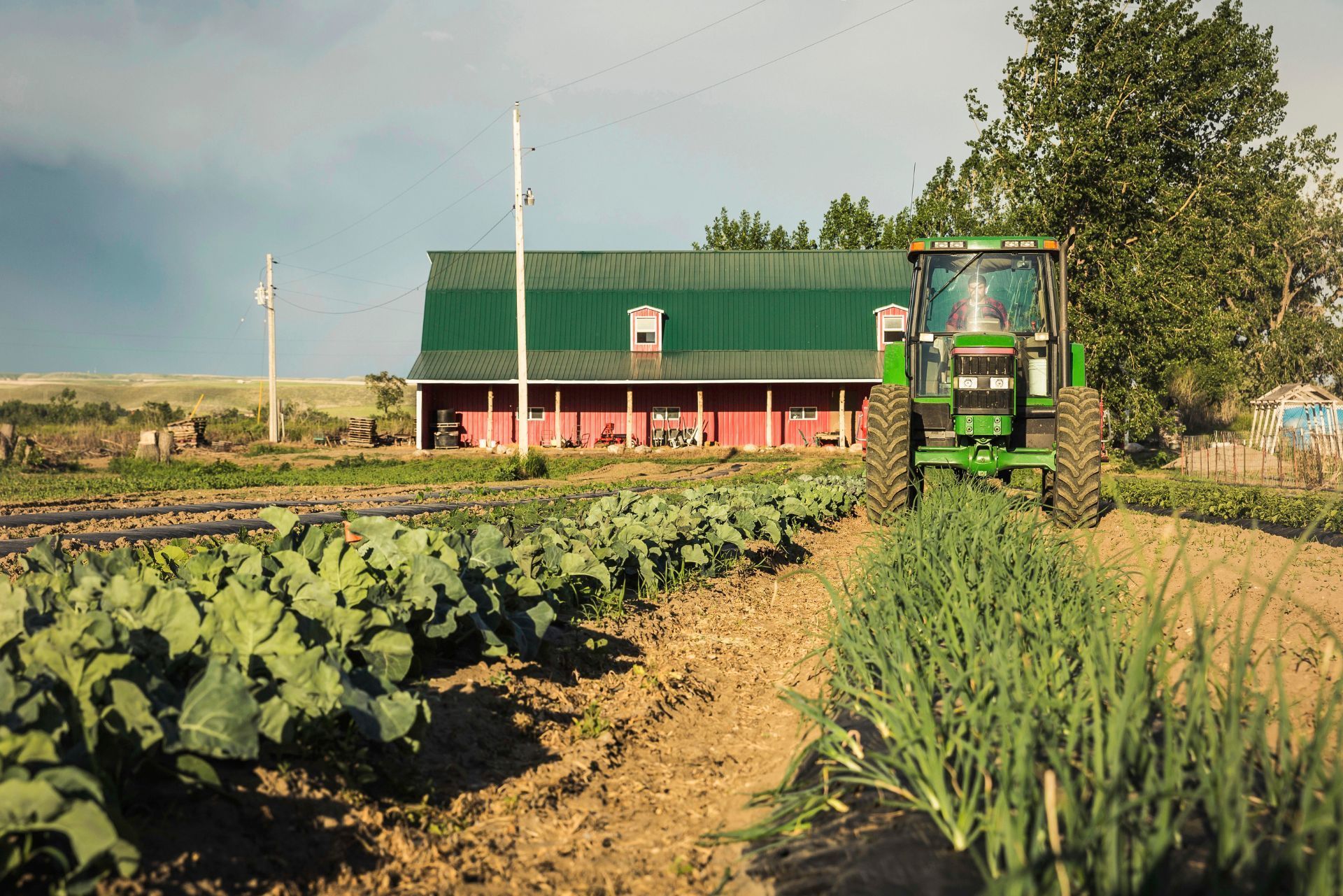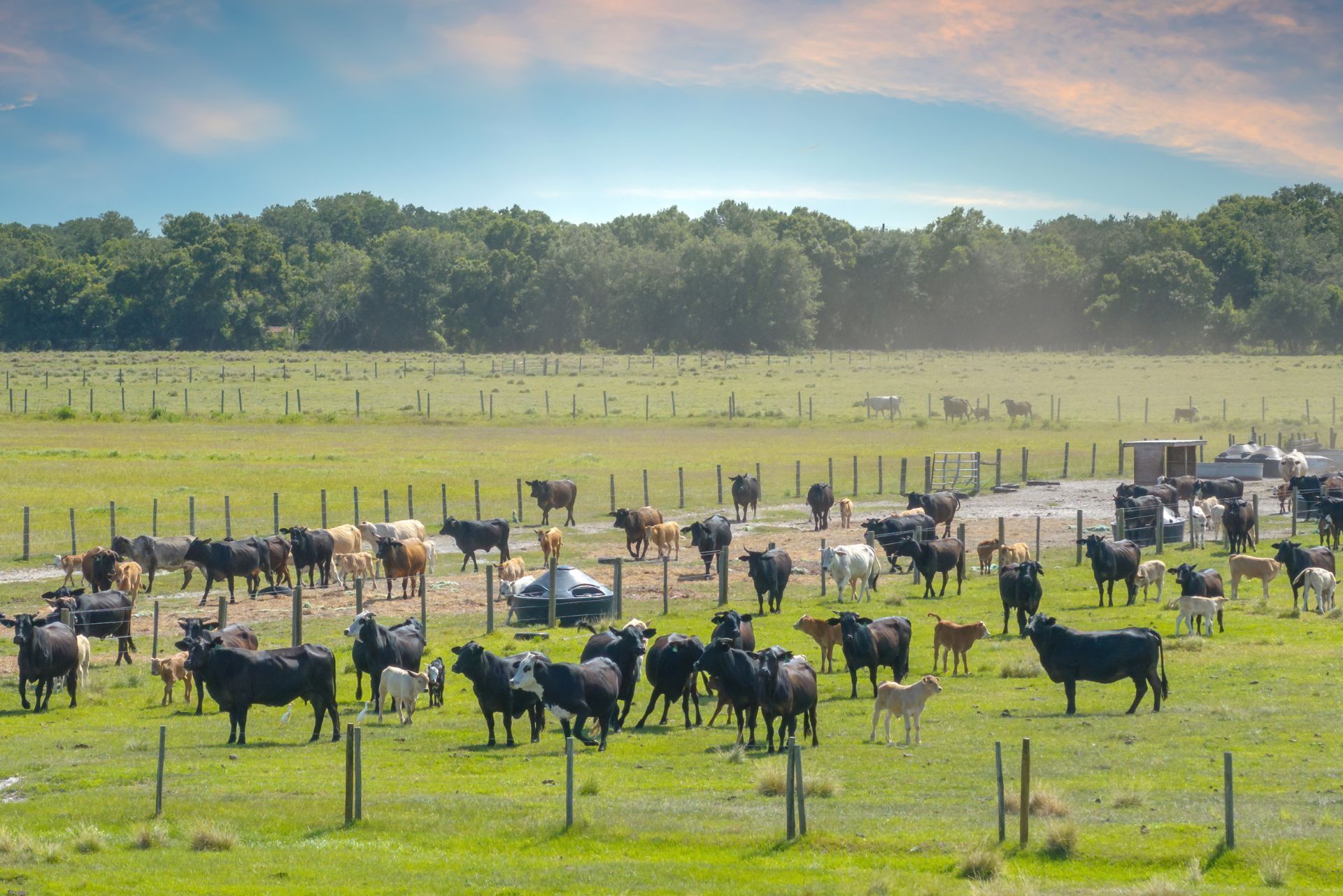
Top 3 Recommended Policies

Kansas, known for its vast prairies and rich agricultural heritage, is home to numerous farms and ranches. These operations are not just vital to the state's economy but also to the cultural fabric of rural life. However, with the joys of farming and ranching come inherent risks. This is where Kansas farm and ranch insurance plays a crucial role. Understanding the nuances of this type of insurance can help protect your livelihood and ensure peace of mind.
What is Farm and Ranch Insurance?
Farm and ranch insurance is a specialized form of coverage designed to protect agricultural operations. Unlike standard homeowners' insurance, this type of policy addresses the unique risks associated with farming and ranching, including property damage, liability, and equipment loss.
Key Components of Farm and Ranch Insurance
This insurance typically includes coverage for buildings, equipment, livestock, and crops. It can also offer liability protection in case someone is injured on your property or if your operations cause damage to someone else's property.
Moreover, many policies can be tailored to fit specific needs, ensuring that farmers and ranchers are adequately covered against the risks they face daily. For instance, some policies may include coverage for specialized equipment like tractors and irrigation systems, which are vital for efficient farm operations. Others might offer protection against crop failure due to pests or diseases, providing peace of mind in an industry that is often at the mercy of unpredictable weather and market fluctuations.
Why is it Important?
The importance of farm and ranch insurance cannot be overstated. Agricultural operations are susceptible to various risks, from natural disasters like floods and droughts to accidents involving machinery. Without proper insurance, a single incident could lead to devastating financial losses. Furthermore, the agricultural sector plays a crucial role in the economy, and disruptions can have far-reaching effects, not just for individual farmers but also for the communities that rely on them.
Additionally, having insurance can help farmers and ranchers secure loans and grants, as lenders often require proof of coverage before approving financial assistance. This financial backing is essential for maintaining and expanding operations, whether it's investing in new technology, purchasing additional land, or improving infrastructure. In a world where agricultural practices are increasingly influenced by climate change and evolving market demands, comprehensive insurance coverage is not just a safety net; it is a strategic tool that can help ensure the long-term viability and success of farming and ranching enterprises.

Types of Coverage Available
Farm and ranch insurance policies can be quite comprehensive, offering various types of coverage. Understanding these options is essential for selecting the right policy for your needs.
Property Coverage
Property coverage protects physical assets, including barns, silos, and equipment. This type of coverage can extend to both owned and rented properties, ensuring that all operational bases are covered.
Many policies also include coverage for personal property, which encompasses tools, machinery, and livestock. This ensures that if anything were to happen, the financial impact would be minimized. Additionally, some policies may offer coverage for loss of income due to property damage, which can be critical for maintaining cash flow during recovery periods. It's important to review the specifics of your policy to understand any exclusions or limitations that may apply.
Liability Coverage
Liability coverage is crucial for protecting against claims arising from injuries or damages caused by your farming or ranching activities. This can include incidents involving visitors to your property, as well as accidents involving farm equipment.
In Kansas, having adequate liability coverage is especially important due to the potential for lawsuits that can arise from agricultural operations. This coverage can help safeguard your assets and future earnings. Furthermore, many policies offer specialized liability options, such as coverage for pollution or environmental damage, which can be particularly relevant for operations that utilize chemicals or fertilizers. Understanding these additional options can provide peace of mind and ensure comprehensive protection against a range of potential liabilities.
Crop Insurance
Crop insurance is a vital component for farmers, providing protection against loss of crops due to natural disasters, pests, or disease. This type of insurance can help ensure that farmers can recover financially from unforeseen events.
In Kansas, where agriculture is a significant part of the economy, crop insurance can be a lifeline for farmers, allowing them to continue operations even after a devastating loss. There are various types of crop insurance available, including revenue protection and yield protection, each tailored to different farming practices and risk levels. Additionally, some policies may offer coverage for specific crops or provide incentives for implementing sustainable farming practices, making it essential for farmers to assess their unique needs and consult with insurance experts to find the best fit for their operations.
Factors Influencing Insurance Costs
The cost of farm and ranch insurance can vary widely based on several factors. Understanding these can help you make informed decisions when selecting coverage.
Type of Operation
The nature of the farming or ranching operation plays a significant role in determining insurance costs. For example, a large-scale dairy farm may have different risks compared to a small crop farm. Insurers will assess the specific risks associated with each type of operation.
Additionally, whether the operation is primarily commercial or personal can also impact premiums. Commercial operations may face higher rates due to the increased risk of liability claims. Moreover, specialized operations, such as organic farming or aquaculture, may require unique coverage options that can further influence costs. Insurers often consider the equipment used, the number of employees, and the types of products produced when evaluating risk, which can lead to variations in premiums across different agricultural sectors.
Location
The geographical location of the farm or ranch can significantly influence insurance costs. Areas prone to natural disasters, such as floods or tornadoes, may see higher premiums due to the increased risk of property damage.
Furthermore, proximity to urban areas can also affect rates, as urban settings may have different liability risks compared to rural environments. For instance, farms located near densely populated regions might face higher liability coverage costs due to the potential for accidents involving the public. Additionally, local regulations and zoning laws can impact insurance rates; farms in areas with stringent agricultural regulations may incur higher costs due to the need for compliance and potential legal challenges.
Coverage Limits and Deductibles
The level of coverage and the deductibles chosen will also impact the cost of the insurance policy. Higher coverage limits typically result in higher premiums, while opting for higher deductibles can lower costs.
It is essential to strike a balance between adequate coverage and affordability to ensure that you are protected without overextending your budget. Understanding the specific risks associated with your operation can help you determine the appropriate coverage limits. For instance, if your farm relies heavily on specialized equipment, it may be wise to invest in comprehensive equipment coverage. Additionally, reviewing your policy regularly and adjusting your coverage as your operation grows or changes can help manage costs effectively while ensuring that you remain adequately protected against unforeseen events.
Choosing the Right Insurance Provider
Selecting the right insurance provider is crucial for obtaining the best coverage for your needs. Not all insurers offer the same policies or levels of service, so it is essential to do thorough research.
Reputation and Experience
When considering insurance providers, look for companies with a strong reputation in the agricultural sector. Experienced insurers will have a better understanding of the unique challenges faced by farmers and ranchers.
Reading reviews and seeking recommendations from fellow farmers can provide valuable insights into the reliability and service quality of potential insurers. Additionally, you might want to check industry ratings from organizations like A.M. Best or Standard & Poor's, which evaluate the financial strength and stability of insurance companies. A provider with a solid financial rating is more likely to be able to pay out claims when needed, giving you further confidence in your choice.
Policy Options and Customization
It is essential to choose a provider that offers customizable policy options. Every farm and ranch is different, and having the ability to tailor coverage to specific needs can make a significant difference in protection.
Inquire about the various endorsements and riders available, as these can enhance your policy and provide additional peace of mind. For instance, some insurers may offer specialized coverage for organic farming practices or livestock insurance that includes protection against disease outbreaks. Understanding the nuances of these options can help you make an informed decision that aligns with your operational needs and risk management strategies.
Customer Service and Suppor
Good customer service is vital when dealing with insurance matters. Choose a provider known for its responsive and helpful customer support. This can be especially important during claims processes, where timely assistance can make a significant difference.
Consider the availability of local agents who understand the Kansas agricultural landscape, as they can provide personalized service and support. Furthermore, it’s beneficial to assess the insurer's communication channels—whether they offer online chat, phone support, or an easy-to-navigate website. A provider that prioritizes accessibility and transparency in communication can make navigating the complexities of insurance much less daunting, ensuring that you feel supported every step of the way.
Common Exclusions in Farm and Ranch Insurance
While farm and ranch insurance provides extensive coverage, it is essential to be aware of common exclusions that may apply. Understanding these can help you avoid potential gaps in coverage.
Natural Disasters
Many policies may exclude certain natural disasters, such as earthquakes or floods, unless specific coverage is purchased. In Kansas, where tornadoes and severe storms are common, it is crucial to ensure that your policy adequately covers these risks.
Farmers and ranchers should consider purchasing additional endorsements or separate policies to protect against these specific threats. For instance, flood insurance can be particularly vital for those located near rivers or in low-lying areas, where the risk of flooding is heightened during heavy rains. Additionally, investing in storm-resistant structures and equipment can not only help minimize damage but may also lead to lower premiums over time, as insurers often reward proactive risk management.
Negligence and Poor Maintenance
Insurance policies typically do not cover damages resulting from negligence or poor maintenance. For instance, if equipment failure occurs due to lack of maintenance, claims may be denied.
Regular maintenance and keeping accurate records can help mitigate these risks and ensure that claims are more likely to be honored. Establishing a routine maintenance schedule for machinery and infrastructure can prevent costly breakdowns and extend the lifespan of your assets. Furthermore, documenting maintenance activities and repairs can serve as valuable evidence in the event of a claim, demonstrating that you have taken the necessary steps to uphold your responsibilities as a policyholder.
Intentional Acts
Any intentional damage or fraudulent claims are generally excluded from coverage. Insurers will investigate claims thoroughly, and any evidence of wrongdoing can lead to denial of coverage.
It is essential to maintain transparency and honesty when dealing with insurance matters to avoid complications. Moreover, understanding the legal implications of insurance fraud is crucial; not only can it result in the loss of coverage, but it may also lead to severe legal consequences, including fines or imprisonment. Building a strong relationship with your insurance agent can help clarify any uncertainties about your policy and ensure that you are fully informed about your coverage options and responsibilities.

How to File a Claim
Filing a claim can seem daunting, but understanding the process can make it much easier. Here’s a step-by-step guide to help navigate the claims process.
Document Everything
Before filing a claim, it is crucial to document all damages and losses thoroughly. Take photographs, keep receipts, and maintain records of any relevant communications. This documentation will be vital in supporting your claim.
Having a detailed account of the incident will help expedite the claims process and reduce the chances of disputes with the insurance company.
Contact Your Insurance Provider
Once you have gathered all necessary documentation, contact your insurance provider to report the claim. Be prepared to provide specific details about the incident, including dates, times, and the extent of the damages.
Most insurers have dedicated claims departments that can guide you through the process and answer any questions you may have.
Follow Up
After submitting your claim, it is important to follow up regularly to check on its status. Claims can sometimes take time to process, but staying in communication with your insurer can help ensure that your claim is handled efficiently.
If any additional information is required, prompt responses can help speed up the resolution process.
Tips for Lowering Insurance Premiums
Bundle Policies
Many insurance providers offer discounts for bundling multiple policies. If you have other insurance needs, such as auto or home insurance, consider consolidating them with the same provider to take advantage of potential savings.
Bundling can also simplify management, as having all policies under one roof can streamline communication and billing.
Maintain a Good Safety Record
Implementing safety measures and maintaining a good safety record can lead to lower premiums. Insurers often reward clients who take proactive steps to reduce risks.
Consider investing in safety training for employees and regularly inspecting equipment to minimize accidents and injuries on the farm or ranch.
Review Coverage Regularly
Regularly reviewing and updating your insurance coverage can help ensure you are not overpaying for unnecessary coverage. As operations change, so do insurance needs.
Engaging with your insurance agent to reassess coverage limits and deductibles can help keep costs manageable while ensuring adequate protection.
Conclusion
Kansas farm and ranch insurance is a vital component of protecting agricultural operations. With the right coverage, farmers and ranchers can safeguard their investments and ensure their livelihoods are secure.
Understanding the various types of coverage, factors influencing costs, and how to navigate the claims process can empower agricultural professionals to make informed decisions. By choosing the right provider and regularly reviewing policies, farmers and ranchers can find the balance between comprehensive protection and affordability.
In a state where agriculture is not only a way of life but also a cornerstone of the economy, investing in the right insurance is not just a smart choice—it's a necessity.
Contact Us

